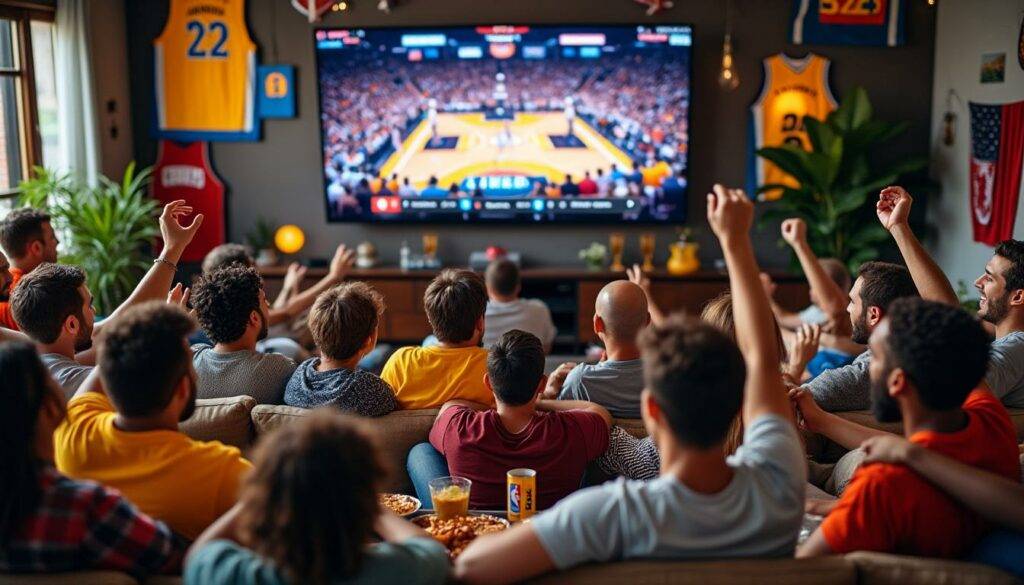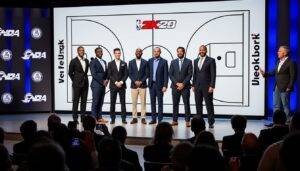Understanding the true fan engagement behind the NBA Finals TV ratings

The NBA Finals continue to captivate millions, but this year’s TV ratings have stirred a heated debate about what true fan engagement really means in today’s age of fragmented media consumption. The clash of perspectives—between those alarmed by a nearly 24% drop in traditional TV viewership and those optimistic about the surge in digital and social engagement—raises challenging questions about how the league, its broadcasting partners, and sponsors like Nike, Adidas, FanDuel, DraftKings, Pepsi, Gatorade, and Coca-Cola are navigating an evolving landscape. While the smaller-market Thunder and Pacers don't command the spotlight the way franchises like Boston or Dallas once did, the series has ignited fresh enthusiasm, proving that the NBA’s reach extends beyond Nielsen ratings.
How Small-Market Finals Influence NBA TV Ratings and Fan Engagement
The 2025 NBA Finals featuring Indiana and Oklahoma City have brought attention to how much the market size and team star power impact TV ratings. Despite shying away from household names like LeBron James or Steph Curry, the series boasts notable talents such as MVP Shai Gilgeous-Alexander and two-time All-Star Tyrese Haliburton, which keeps hardcore fans invested.
- TV ratings through Games 1 and 2 averaged approximately 8.8 million viewers each on ABC, a marked dip from last year’s Boston-Dallas Finals.
- Peak viewership reached 11.54 million during Game 3’s late broadcast slot, showing spikes happen when games are particularly thrilling.
- Four NBA-related ABC programs made the top 10 Nielsen-rated TV shows the week of June 2-8, including pregame and postgame coverage.
These figures prove that while raw TV numbers might seem underwhelming compared to historical data, the Finals maintain consistent interest. The league’s challenge lies in converting digital buzz into live game viewing, a task the NBA and its broadcasters ESPN, TNT, and Disney’s ABC are heavily addressing.
The Role of Multi-Platform Consumption in Measuring NBA Fan Engagement
Traditional television ratings once dominated the conversation about league popularity. Today, the narrative is complex. The NBA’s presence across platforms like YouTube (20 million followers), X with 48 million, Instagram at 90.8 million, and Facebook with 50 million followers highlights a massive audience engaging with basketball content beyond live games.
- NBA social content views have surged 64% compared to last season, reaching over 32 billion in playoff circulation.
- Youth and casual fans increasingly consume highlights and player-created content, shifting away from full-game broadcasts.
- Sponsors like Nike and Adidas leverage these platforms for immersive marketing that captures younger demographics.
Commissioner Adam Silver has openly acknowledged this shift, emphasizing that ratings no longer paint the full picture of a program’s popularity. The league’s strategy now prioritizes fan engagement across emerging and traditional media, banking on momentum generated through platforms like FanDuel and DraftKings, which intertwine betting with viewership.
For an in-depth dive into how virtual and augmented reality technologies are reshaping basketball training and fan interaction, visit this insightful resource: VR and AR Revolution in Basketball.
The Economic Backdrop: Why NBA TV Ratings Aren’t the Whole Story
Behind the scenes, the NBA’s broadcast deals paint an optimistic financial outlook. The freshly inked 11-year, $76 billion TV contract with ESPN, ABC, NBC, and Amazon dwarfs past agreements and insulates the league from short-term swings in ratings. While lower viewership might prompt concern elsewhere, Disney CEO Bob Iger and league executives are far less worried.
- The new contract nearly triples the previous $24 billion, securing the NBA’s long-term marquee status on television and streaming.
- Franchise valuations soar, with teams like the Boston Celtics expected to surpass $6.1 billion, demonstrating the league’s expanding commercial power.
- Live sports retention on TV remains strong due to their unique appeal amidst shifting consumer habits.
This financial resilience allows ESPN and TNT to continue investing in NBA content alongside major advertisers like Pepsi, Gatorade, and Coca-Cola. Their collaboration intensifies the league’s cultural imprint, especially as the show pivots toward crossover entertainment aspects incorporating music and fashion.
What the NBA Finals Ratings Reveal About the Future of Basketball Viewership
Navigating the intersection of small-market Finals, evolving viewer habits, and soaring digital engagement instructs a new blueprint for NBA success. The Thunder-Pacers series, currently extending beyond five games, naturally boosts advertising revenue and multiplies exposure for partners, making every game a win despite traditional metric dips.
- Longer series means higher ad revenues, a crucial factor for broadcasters like ESPN and TNT.
- Increasingly diversified fan touchpoints—ranging from DraftKings betting to Instagram stories—expand the NBA’s footprint.
- The emergence of new stars outside the LeBron/Steph/KD paradigm broadens the league’s appeal nationally.
Those wanting a full perspective on this season’s high-stakes battles and how they fit into broader narratives should read more at Thunder-Pacers NBA Finals Analysis and check discussions on rivalries, drafts, and other NBA developments here: NBA Mock Draft AI and Celtics vs Knicks Rivalry.

